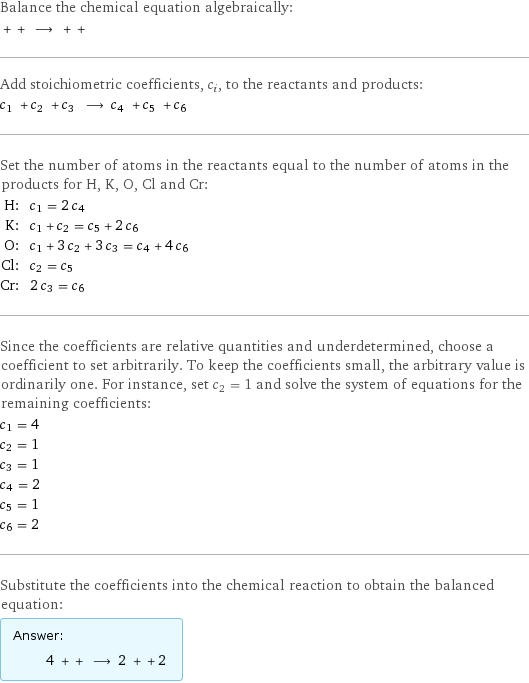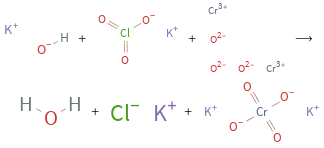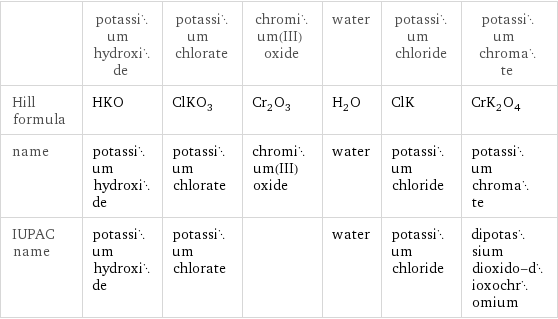Input interpretation

potassium hydroxide + potassium chlorate + chromium(III) oxide ⟶ water + potassium chloride + potassium chromate
Balanced equation

Balance the chemical equation algebraically: + + ⟶ + + Add stoichiometric coefficients, c_i, to the reactants and products: c_1 + c_2 + c_3 ⟶ c_4 + c_5 + c_6 Set the number of atoms in the reactants equal to the number of atoms in the products for H, K, O, Cl and Cr: H: | c_1 = 2 c_4 K: | c_1 + c_2 = c_5 + 2 c_6 O: | c_1 + 3 c_2 + 3 c_3 = c_4 + 4 c_6 Cl: | c_2 = c_5 Cr: | 2 c_3 = c_6 Since the coefficients are relative quantities and underdetermined, choose a coefficient to set arbitrarily. To keep the coefficients small, the arbitrary value is ordinarily one. For instance, set c_2 = 1 and solve the system of equations for the remaining coefficients: c_1 = 4 c_2 = 1 c_3 = 1 c_4 = 2 c_5 = 1 c_6 = 2 Substitute the coefficients into the chemical reaction to obtain the balanced equation: Answer: | | 4 + + ⟶ 2 + + 2
Structures

+ + ⟶ + +
Names

potassium hydroxide + potassium chlorate + chromium(III) oxide ⟶ water + potassium chloride + potassium chromate
Chemical names and formulas

| potassium hydroxide | potassium chlorate | chromium(III) oxide | water | potassium chloride | potassium chromate Hill formula | HKO | ClKO_3 | Cr_2O_3 | H_2O | ClK | CrK_2O_4 name | potassium hydroxide | potassium chlorate | chromium(III) oxide | water | potassium chloride | potassium chromate IUPAC name | potassium hydroxide | potassium chlorate | | water | potassium chloride | dipotassium dioxido-dioxochromium